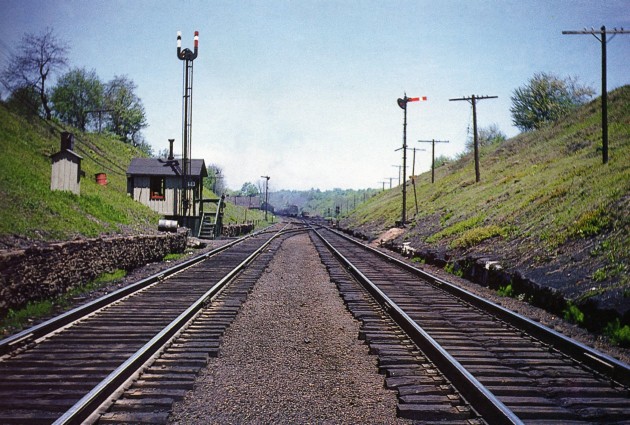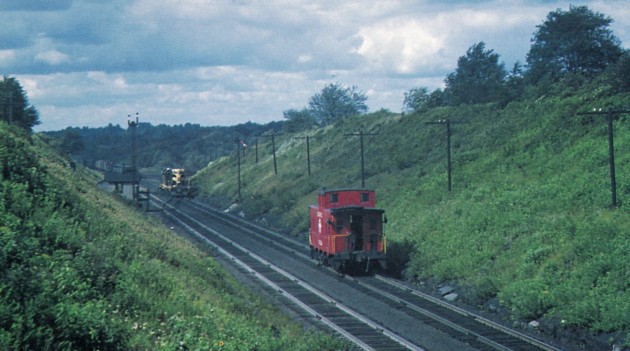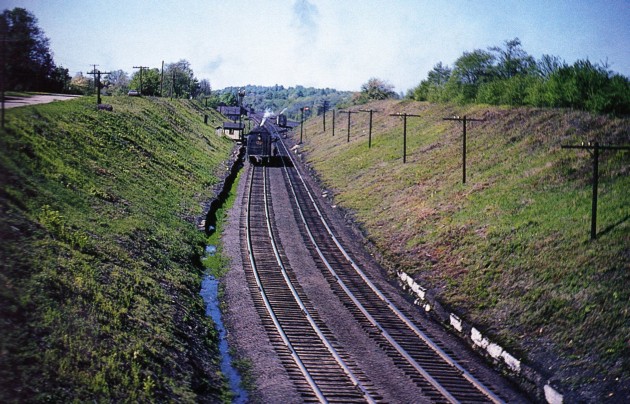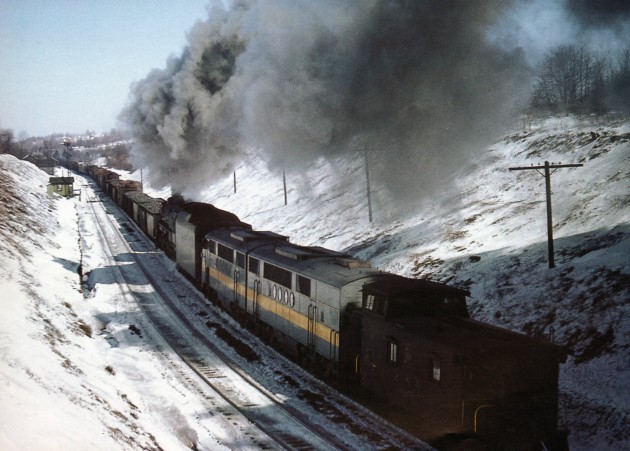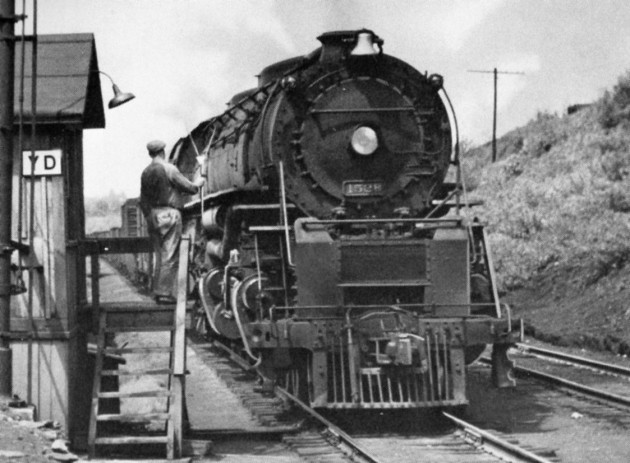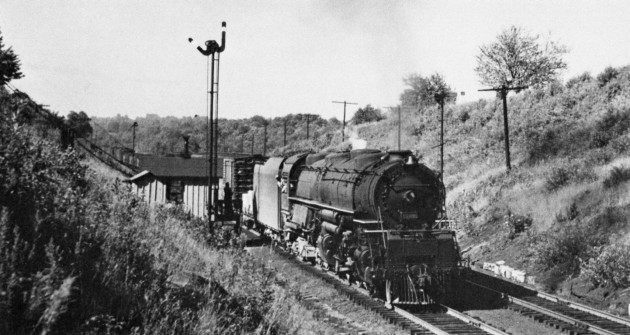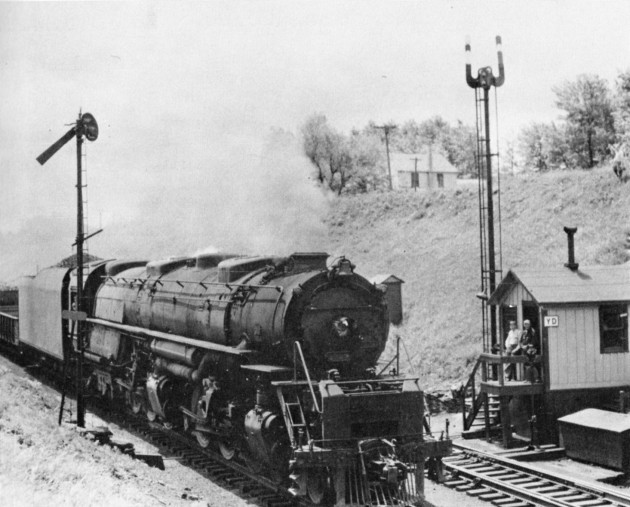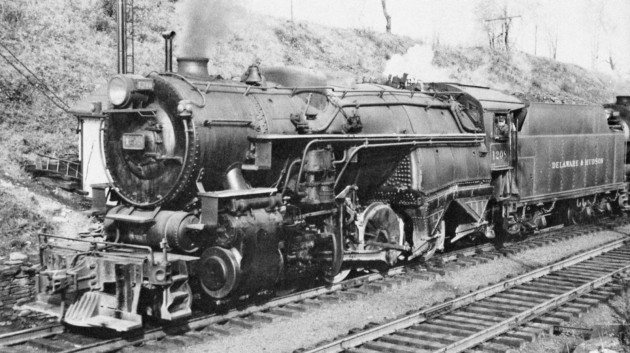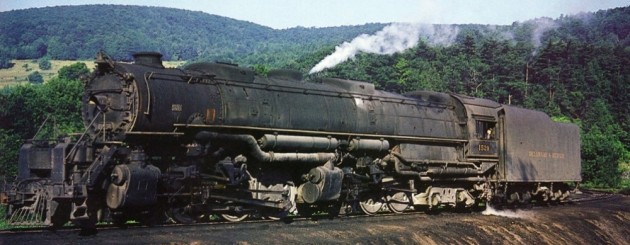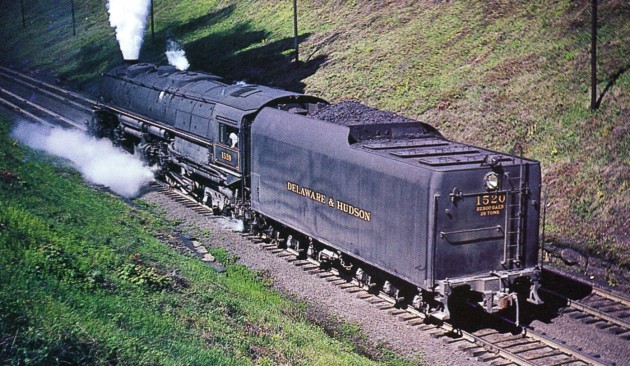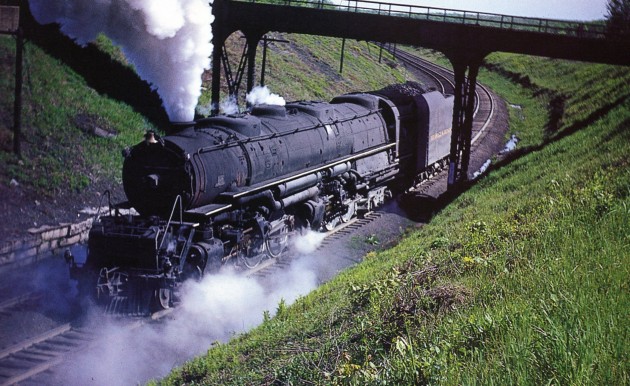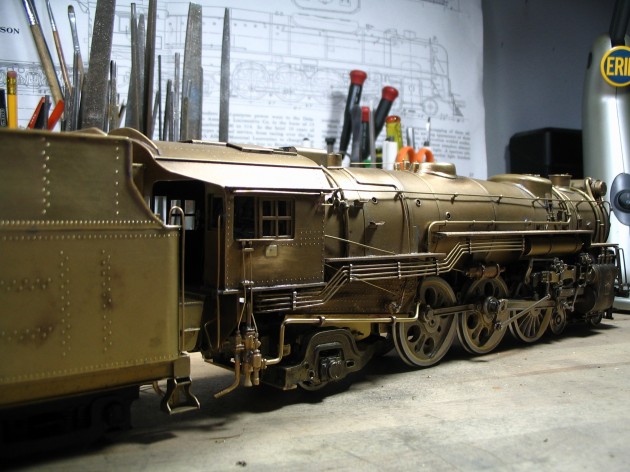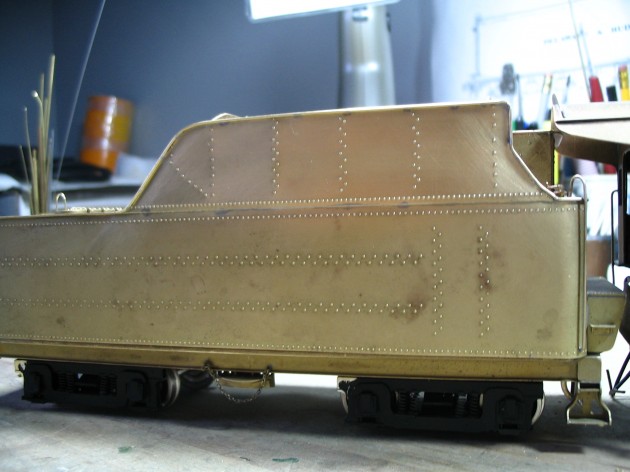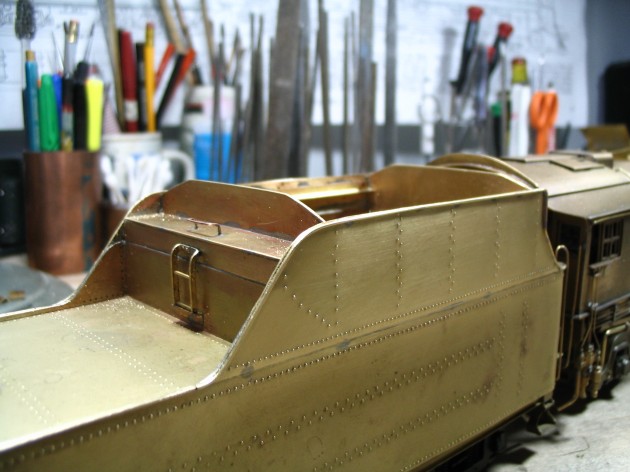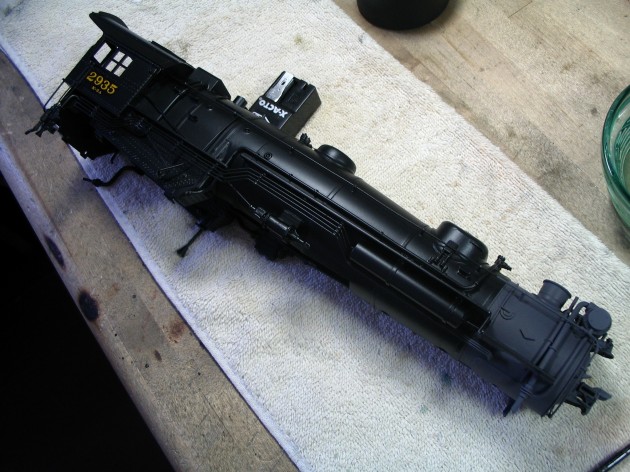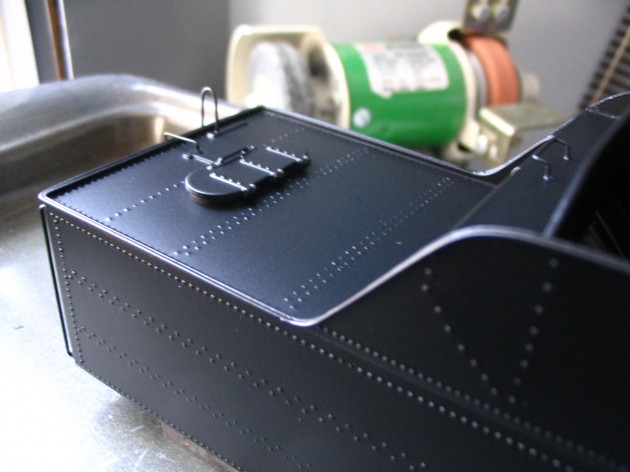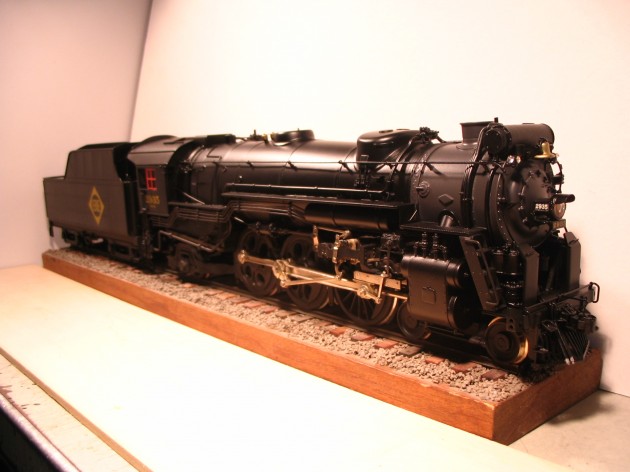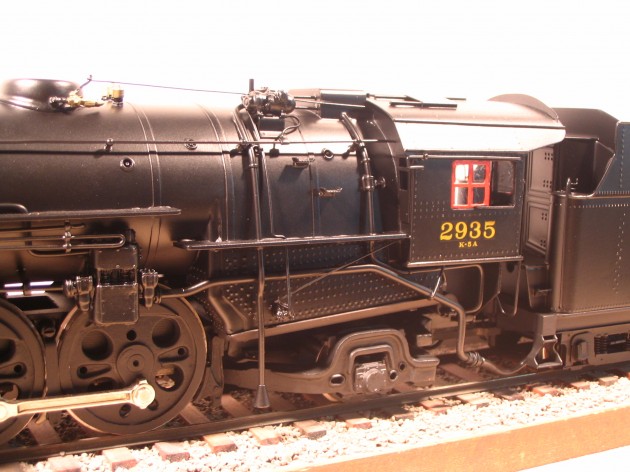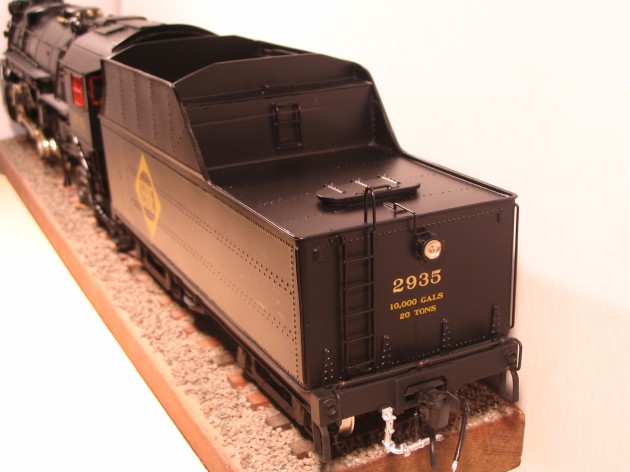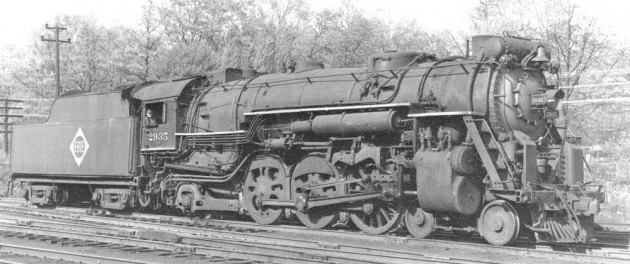Erie’s YD Tower at Ararat
The portion of the D&H Penn Division that I am modeling is the segment between Lanesboro, PA to the north, and Carbondale, PA to the south (a distance of about 36 miles). Approximately half-way between those two locations lies the tiny hamlet of Ararat, PA. This represented the summit of the climb from both the north and the south, and in 1952 was the location as which north and southbound pushers either ran through, or were cut off, turned on the wye, and sent back running light to either Lanesboro or Carbondale.
This view looks north, downgrade, and towards Lanesboro. Tiny YD Tower and its privy can be seen up ahead on the left. Even though the D&H was the dominant railroad on the line, the track and its structures were owned and manned by the Erie. That being the case, YD Tower is painted in the traditional Erie Company Colors of Cream-Gray with Dark Green trim, and Red window sashes. The crossover tracks are right in front of YD, and the wye is off-scene a bit, past the tower and behind the end of earthen embankment on the right. The entire length of the Jefferson Division (Jefferson Junction to Carbondale) featured manually operated switches and signals until the line was purchased outright by the D&H in 1955, at which time CTC was installed. All color images in this section are courtesy Morning Sun Books, from their publication entitled Delaware & Hudson Steam in Color. That book is no longer in print, but Morning Sun has made the e-book version available. Visit http://morningsunbooks.com/products/delaware-hudson-steam-in-color-digital-reprint (Henry W. Peterson photo)
Although operating far fewer trains per day, the Erie also ran on this line. It’s July 24th, 1952 and Erie diesels are starting to invade the Division. Here we see a pair of their 1200 series GP-7’s sitting near the tower. The diesels have dropped their caboose and are getting ready to run through the crossover in front of YD. The caboose will then release its brakes and drift downgrade via gravity, catching up to its train (seen in the distance) and re-couple “on the fly”. This maneuver was affectionately know as “The Dutchman’s Drop” when it was being performed by the D&H. Unlike a steam loco, the Geeps do not need to be turned on the wye, but will simply reverse direction, cross over to the southbound main in front of YD, and run light back to Carbondale.
The Erie began dieselizing all its mainline freight and passenger operations starting in 1946 when they acquired several EMD FT A-B-B-A sets. Once that process began, the Erie Berks and Santa Fe’s were considered surplus on the main and were re-assigned to secondary service. Until the winter of 1951, this pusher assignment would have been held down by a 2-8-4 or 2-10-2, but now in mid-1952, a pair of Geeps are working in this capacity, operating along side Erie steam, and will continue to do until this time next year, when all remaining steam will finally be relegated to the scrapper’s torch. (Robert F. Collins photo)
On May 30th, 1952 we find a Challenger in pusher service sitting next to YD, and a second 4-6-6-4 up ahead, parked on the siding between the two legs of the wye. (Henry W. Peterson photo)
During the early 1950’s, coal strikes were common. The NYO&W was an interchange partner with the D&H in Carbondale; their own Mayfield Yards were just few miles away. During this time the bankrupt O&W had completely dieselized, and was still hauling anthracite coal as a primary source of revenue.
With the miners on strike, and locomotive coal scarce (unlike other roads, the D&H burned a mixture of anthracite and bituminous in their steam locomotives), the D&H had sidelined some of their steamers, and the O&W had fewer loads to haul, sidelining some of their diesels. That being the case, the O&W F-units were sitting on their property not making money, and the D&H was in need of additional motive power. So, during coal strikes the O&W would rent their surplus diesels to the D&H as pushers. In this March 19, 1950 scene, O&W FT A-B couplet in D&H pusher service is approaching YD Tower, after having just crested the summit of Ararat Mountain. (Robert F. Collins photo)
J-Class #1528 with a southbound Symbol approaches YD to pickup orders on the fly. All B&W images in this section from the Carstens book Delaware & Hudson Challengers and Northerns (Bert Pennypacker photo)
On July 25, 1952 southbound Symbol MW-4 (Mechanicville-Wilkes-Barre-4) with 124 cars in tow passes YD after picking up orders. (Robert F. Collins photo)
And here were see the rear end of MW-4, as J-Class pushers 1526 and 1522 pass by YD and pick up their orders. (Robert F. Collins photo)
In a rare reverse view of the tower, Northbound Challenger #1527 passes YD in the summer of 1952. In less than 12 months these leviathans will have gone to scrap; diesels having taken their place. (John Krause photo)
Two D&H “JUMBO” E-6a Class 1200’s (#1208 and #1217) have just completed a push up the hill, have been turned on the wye, and are passing YD to pick up orders for the return run south to Carbondale. (John Krause photo)
